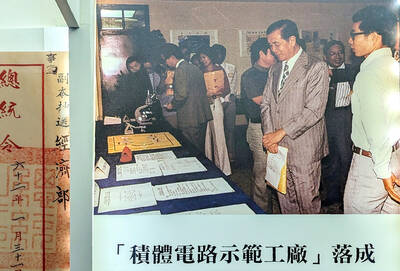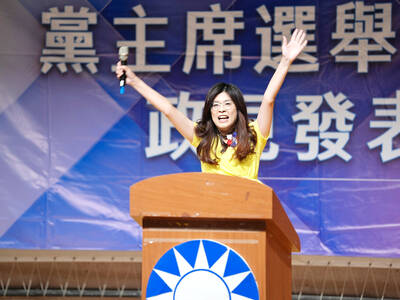IF anything can be called a cinematic event, the release of Lord of the Rings: The Return of the King is definitely that. So much has been expected of it, especially given the achievement of The Two Towers, that the third instalment is something of a disappointment. Many believe that Peter Jackson has saved the best for last, and in cinematic terms that is debatable, but in terms of storytelling, he will surely have disappointed aficionados of the book as he tries to draw in the many threads of the previous six hours of the trilogy.
That said, LOTR has brought the art of the cinematic trilogy to unprecedented heights and while it leaves plenty of room for lovers of the book to niggle over various acts of infidelity to J.R.R. Tolkien's grand vision, it has a massiveness of conception all its own that cannot be denied, and this will be the basis for its survival in cinematic history -- for ultimately the soul of Tolkien's life's work has not in any real sense survived the transition to celluloid.

This may seem a harsh judgment, but it must be accepted that the saga has been "Hollywoodized," stripped of its nuances and used as a vehicle to showcase the incredible technology that has become the real star of modern moviemaking. In this respect, the achievement of Andy Serkis as Gollum has proved truly remarkable, enlivening the long journey of Frodo and Sam into Mordor with some virtuoso schizophrenia. In other areas the technology has not been so effective.

But first to the story. Return of the King starts out with a recap of the history of the ring and how it came to be in the possession of Gollum. The fact that these little snippets from the history of the ring manage to provide adequate background for the story is a tribute to the editing skills of Jamie Selkirk. From there the film jumps to the fall of Isengard, though without any more scenes from Christopher Lee as Saruman, which is something of a pity.
From there we get into some serious Celtic revival stuff, which is the "Muster of Rohan" -- gorgeous and painstaking created costumes, lots of horses, beefy men with beards and a lovelorn and heart-rendingly beautiful Miranda Otto as Eowyn -- jump to Gondor and the "Madness of Denethor" and the much anticipated "Battle of Pelennor Fields," before a final gathering of the forces in front of the Black Gate.

Cut in-between these scenes of martial splendor is the journey of Frodo and Sam into the depths of Mordor, displaying a heroism of a different order. Elijah Wood and Sean Austin put in incredible performances in demanding roles, avoiding sentimentality by a hair. They are greatly aided by some brilliant visual effects that manage to make the lands of Mordor truly terrifying, although some of the final sequences around Mount Doom fall into a comic book excess that the trilogy had successfully avoided until this point. Brian Shore's generally complementary score also becomes rather intrusive towards the end, as the director seeks to pull any remaining heartstrings that the previous two-and-a-half hours have failed to pull already.

While many fans of the books were delighted by the degree of fidelity showed by director Peter Jackson in The Fellowship of the Ring, this diminished substantially in the second film, with the set piece battle of Helm's Deep greatly expanded from a mere 10 pages or so in the book to virtually one-third of the movie. The Battle of Pelennor Field, which spreads over four chapters or so, in which combat is interwoven with a development of personal relationships within the besieged city, is reduced pretty much to a single set-piece battle sequence. As magnificent as it is, it manages to be somewhat anticlimactic. It is after all just a diversion from the main action, which is taking place between Frodo, Sam and Gollum.
While this triangular relationship is brilliantly handled, the political relationship between Aragorn, Denethor and Farmair -- and the romantic relationship between Aragorn, Eowyn and Arwen -- is botched somewhat spectacularly, and this is at the heart of Return of the King's failure to move its audience. In the latter case it resorts to some of the worst cliches of Hollywood romance, with no attempt to re-create the chivalric ethos in which Tolkien's characters exist. In the former, the exposition required to make any sense of the relationship of Aragorn to Gondor and its family of high stewards would have probably required a whole separate instalment.
The huge scale of Return of the King tends to overwhelm individual characters, and despite the best efforts of John Nobel as Denethor and David Wenham as Faramir to inject some human drama into the Gondor sequences, this is no competition for the amazing costumes and computer graphics of the massed army standing at the gate.
This is not to say that Jackson does not plug away at the drama. He does, but with the exception of Aragorn's exhortation before the Black Gate -- when the ranks of Gondor and Rohan face off against insuperable odds and there is a speech worthy of Kenneth Branagh's St. Crispin's Day oration in Henry V -- it often seems rather stilted.
This is more than a pity, as Jackson -- having decided that the back story of Gordor is simply not possible to bring to the screen -- tries to see everything else in simplified psychological terms. What we end up with are cardboard cutouts. What is highlighted is simply the race against time, with the armies simply holding out to buy time for Frodo as he battles his way to Mount Doom. Here again we have Hollywoodization at work, with these simple structures taking the place of real story-telling.
It is also rather unsettling to see the repetition of certain screen effects, not least the "army of the dead," who sweep over the soldiers of Sauron in almost exactly the same way as the "army of Anubis" in The Mummy Returns, and their king is a ghostly graphic who seems to have escaped from Pirates of the Caribbean: Curse of the Black Pearl. No matter how well executed, these effects have little longevity and their reuse in LOTR diminishes it -- but this is probably because the series has given us unrealistic expectations of what it can achieve.
All the spectacle fails to make up for this glossing over of detail, which ultimately undermines it as a serious representation of the original work. The DVDs may go some way to remedying this, as they have considerable added footage, but that would be a subject for a separate review.

Oct. 27 to Nov. 2 Over a breakfast of soymilk and fried dough costing less than NT$400, seven officials and engineers agreed on a NT$400 million plan — unaware that it would mark the beginning of Taiwan’s semiconductor empire. It was a cold February morning in 1974. Gathered at the unassuming shop were Economics minister Sun Yun-hsuan (孫運璿), director-general of Transportation and Communications Kao Yu-shu (高玉樹), Industrial Technology Research Institute (ITRI) president Wang Chao-chen (王兆振), Telecommunications Laboratories director Kang Pao-huang (康寶煌), Executive Yuan secretary-general Fei Hua (費驊), director-general of Telecommunications Fang Hsien-chi (方賢齊) and Radio Corporation of America (RCA) Laboratories director Pan
The consensus on the Chinese Nationalist Party (KMT) chair race is that Cheng Li-wun (鄭麗文) ran a populist, ideological back-to-basics campaign and soundly defeated former Taipei mayor Hau Lung-bin (郝龍斌), the candidate backed by the big institutional players. Cheng tapped into a wave of popular enthusiasm within the KMT, while the institutional players’ get-out-the-vote abilities fell flat, suggesting their power has weakened significantly. Yet, a closer look at the race paints a more complicated picture, raising questions about some analysts’ conclusions, including my own. TURNOUT Here is a surprising statistic: Turnout was 130,678, or 39.46 percent of the 331,145 eligible party

The classic warmth of a good old-fashioned izakaya beckons you in, all cozy nooks and dark wood finishes, as tables order a third round and waiters sling tapas-sized bites and assorted — sometimes unidentifiable — skewered meats. But there’s a romantic hush about this Ximending (西門町) hotspot, with cocktails savored, plating elegant and never rushed and daters and diners lit by candlelight and chandelier. Each chair is mismatched and the assorted tables appear to be the fanciest picks from a nearby flea market. A naked sewing mannequin stands in a dimly lit corner, adorned with antique mirrors and draped foliage

The election of Cheng Li-wun (鄭麗文) as chair of the Chinese Nationalist Party (KMT) marked a triumphant return of pride in the “Chinese” in the party name. Cheng wants Taiwanese to be proud to call themselves Chinese again. The unambiguous winner was a return to the KMT ideology that formed in the early 2000s under then chairman Lien Chan (連戰) and president Ma Ying-jeou (馬英九) put into practice as far as he could, until ultimately thwarted by hundreds of thousands of protestors thronging the streets in what became known as the Sunflower movement in 2014. Cheng is an unambiguous Chinese ethnonationalist,